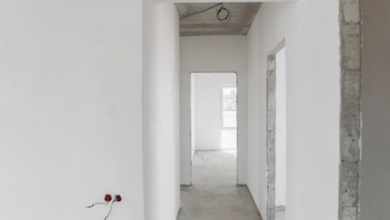Constructing Stability: Expert Tips for Earthquake-Resistant Home Design
Living in earthquake-prone regions of the world poses unique challenges when it comes to home building and construction. Earthquakes can range from minor tremors to major seismic events, so homes must be designed and engineered to withstand substantial shaking. Proper earthquake-resistant design and strategic material selection provide your home stability and enhance life safety in earthquake-prone areas.
Prioritise a Strong Foundation
A solid foundation serves as the first defence against earthquake damage. Shallow foundations subject homes to greater displacement from seismic waves, while deep pile foundations extend to bedrock and provide enhanced structural stability. Geotechnical engineers often recommend deep foundations anchored in competent soil or bedrock to resist seismic forces in earthquake zones.
Steel Reinforcing is Key
Reinforced foundations, walls, and structural members better resist seismic activity. Concrete masonry unit (CMU) construction reinforced with steel rebar and grout provides good inherent earthquake resistance. Reinforcing steel bars engineered masonry joint reinforcement, and steel structural members provide ductility and added strength. Properly reinforced masonry chimneys also reduce collapse hazards.
Strive for Simple Structural Framing
Basic box-type construction built using stud walls with plywood/OSB shear panels avoids architectural features vulnerable to failure. Complex framing configurations with excessive openings and overhangs allow damaging movement and increase risks. Simple, boxy structure shapes reduce weak points. Interconnected shear walls and panels distribute earthquake loads evenly throughout the structure as well.
Consider 3D Printed Homes
3D concrete printing technology can be used to create an earthquake proof house. Computer modelling analyses seismic loads and custom prints homes with organic shapes, advanced reinforcement, and superior structural integration. The flexibility of 3D printing may enable engineered homes uniquely suited for stability in each building site’s geographic region. Though still an emerging home-building method, printed homes could provide the most resilient earthquake-proof houses of the future.
Secure Utility Systems
Gas lines, water pipes, electrical systems, and home technology must also withstand shaking in an earthquake. Flexible piping connections, restrained water heaters, and special consideration for home electronics prevent damage, fires, or other secondary hazards after a seismic event. Talk to builders about securing critical utility systems and technology.
Strong Wall-Roof Connections Matter
Earthquake energy transmits from the foundation upward, so each building component must connect securely from the foundation to the roof. Strengthened wall framing ties the masonry or stud walls into floor and ceiling framing using metal connectors to resist separation. Positive ties from roof framing down into bearing walls keep the entire building acting as one unit.
Use Earthquake Proofing Materials
While concrete masonry, reinforced steel, and structural wood panels enhance seismic performance, added isolation and damping technologies introduce resiliency. Resilient metal framing systems, viscoelastic isolator pads beneath floors/walls, and damping layers within building materials absorb earthquake energy. These high-tech products actually allow earthquake survival by design rather than relying solely on strength.
Pay Attention to Non-Structural Hazards Too
Heavy masonry chimneys/veneers, architectural facades, and home contents become earthquake projectiles. Brace, reinforce, or isolate non-structural components accordingly. Securely fastened interior partition walls, window/door glazing protection, flexible utility connections, secured shelving/furniture, and restrained hazardous materials prevent secondary earthquake damage and lessen safety risks to building occupants.
Constructing earthquake-resistant housing requires proper structural configuration, durable building materials, reinforced walls/members, and secure connection details between all components. Following earthquake-resistant building concepts greatly enhances building stability and seismic performance. Implementing resilience strategies makes building in earthquake zones safer.





